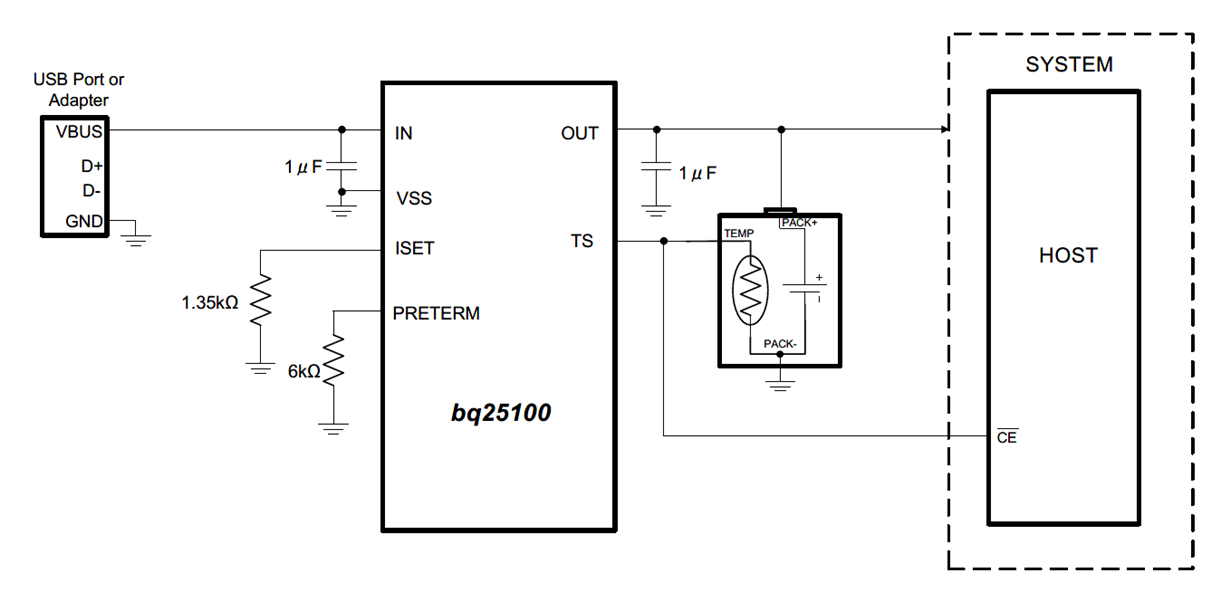Other Parts Discussed in Thread: BQ25155, BQ25150
We are using BQ25101 in our design. We implemented the same circuit given in the datasheet as below in the previous version of the PCB, but we had an issue. We couldn't bring up the MCU. The MCU started waking up thru the "battery - OUT (charger) - GPIO(MCU)" connection before the power from the regulator reaches MCU VDDS. When we disconnect the battery to GPIO connection, the issue is resolved.
We know that we need a switch between the "battery - OUT (charger)" and "MCU GPIO". I cannot find any TI reference design which shows the implementation of BQ25101 to the MCU with a switch. Could you please help to share if you have any?



